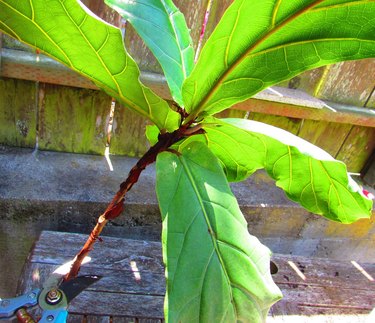
The first time I saw a fiddle leaf fig standing tall with its huge, gorgeous leaves, I set my heart against it. It was too trendy, too stylish, too picky, and too elegant for my casual lifestyle. Then, someone on my block was moving, and their fiddle leaf ended up in my home office. The stately beauty and glowing vitality of this treelike plant have totally made me a fan. No, it's not on the list of the easiest houseplants to grow, but it's worth a little extra effort!
All About the Fiddle Leaf Fig
Video of the Day
With leaves the size and shape of fiddles, the fiddle leaf isn't the kind of houseplant that sits quietly on a corner shelf. This is a big plant that makes a statement! The plant is shaped like a small tree and grows to 6 feet fairly quickly. These small trees need mild temperatures and indirect light but are tough enough to accept some cultural care variations.
Video of the Day
Fiddle Leaf Fig (Ficus lyrata) Highlights
- Care required: not too difficult
- Light and location: light shade to bright, indirect light
- Watering: enough to keep the soil moist but never wet
- Height: to 6 feet indoors
- Growth rate: moderate- to fast-growing
- Ornamental value: large, gorgeous leaves
- Pet-safe: toxic to both humans and pets
- Hardiness zones: 10–12
Fiddle Leaf Fig Care
If you set up your fiddle leaf fig for success, you will find it reasonably easy to care for it. But if you fail to offer something close to the cultural conditions it prefers, it can be a challenging houseplant. Always keep in mind that a fiddle leaf living its best life would be in the humid central southern areas of Africa, shooting up to 50 feet. You can persuade it to look good as a houseplant, but you won't ever equal its outdoor native situation.
Despite this, the fiddle leaf is the ultimate elegant houseplant. The plant is particular about its cultural needs and shows its displeasure when they aren't met by dropping some of its gorgeous, leathery leaves.
So, what does it need? It requires well-draining soil, ideally loam that holds in moisture. It also needs an adequate container with generous drain holes; sufficient water to keep the soil moist; and a site with bright, indirect sunlight. Your fig will look its best if you regularly wipe down its leaves to remove dust and up the humidity around it.
All of these requirements are important to a fiddle leaf. But the three most critical factors are location, location, and location.
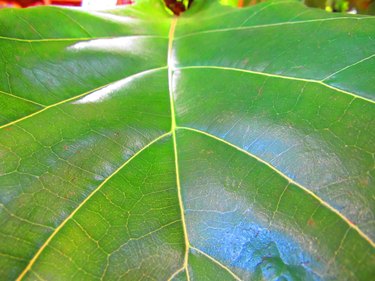
Best Location for a Fiddle Leaf Fig
You may have to work to find a site where the light intensity is good for your fiddle leaf fig, but once you do, the plant can truly thrive. Avoid extremes. Too little light and the leaves will fall; too much light and the leaves will first scorch and then fall.
Place the houseplant in a spot that gets bright, indirect light. Light morning sunshine is acceptable. My plant disliked the first location I offered it (close to an east-facing window) and dropped several leaves until I moved it back a few feet. Learn from my mistakes and place yours a short distance from the window.
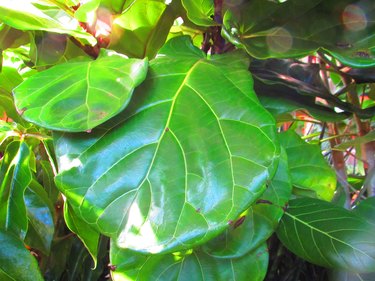
Air Temperature and Humidity
These are fair-weather plants. They like a mild to warm atmosphere and as much humidity as possible. Fortunately, our normal interior temperatures work just fine in terms of air warmth. But if your house is anything like mine, the normal humidity just isn't enough to keep the plant satisfied.
You can increase humidity by placing a large saucer under the pot with water in it as well as sufficient pebbles to keep the floor of the container above the water level. Alternatively, group several tall plants together to increase moisture in the air or use a home humidifier.
How to Water a Fiddle Leaf Fig
Fiddle leaf figs need plenty of water to hydrate those huge leaves, but wet, soggy soil is a definite no-no. Dry soil is also a cause for the plant to throw a tantrum, shedding leaves like a birch tree in October.
First, keep in mind that drainage is essential, so be sure the soil is loamy and the pot has drain holes. Assuming that is in order, test the soil every time before watering. You won't need fancy equipment; one finger will do. Poke that finger into the soil and water the plant if the top 2 inches are dry. Water well when you do water, giving the plant a nice long drink. But be sure to empty the saucer under the plant when you are finished.
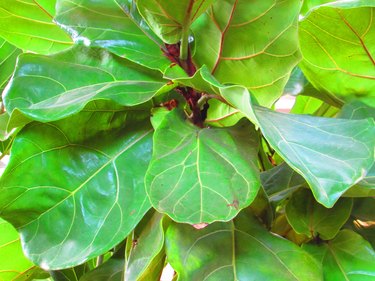
Fiddle Leaf Fig Fertilizer
I am not a big fan of fertilizer for houseplants, and the fiddle leaf fig is naturally a fast-growing tree. But my take isn't the only one, and there are many who love to offer their plant fertilizer. In fact, you can even find formulations specific to fiddle leaf figs.
If you want to rev up the growth of your plant, you can apply a water-soluble, high-nitrogen plant food every month during spring and summer. Always water well first.
Repotting a Fiddle Leaf Fig
When should you repot a fiddle leaf fig? Start when you bring it home from the garden store. Gently remove the container from the rootball to see whether it needs a bigger pot. At the same time, cut any circling roots.
To repot, select a container one size bigger than the prior one. Use quality potting soil, blending in some perlite to up the drainage. After the initial repotting, plan to repot again every couple of years.
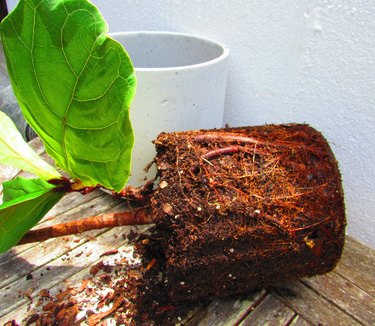
Propagating a Fiddle Leaf Fig
The best way to propagate fiddle leaf fig houseplants is by rooting stem cuttings in water or in soil. I prefer to root them in water to watch their progress.
Use garden pruners to clip off one or more stems with healthy leaves. Each cutting should be at least 8 to 10 inches. For each cutting, make a diagonal cut just below a leaf node. Put the stems of the cuttings in a tall, heavy container filled with tepid water. At least one leaf node should be under the water level.
Position the container in a location with bright, indirect sun. Change the water at least once a week. You will see roots appear in two months or less. The cuttings are ready to put in soil when the roots get to an inch long.
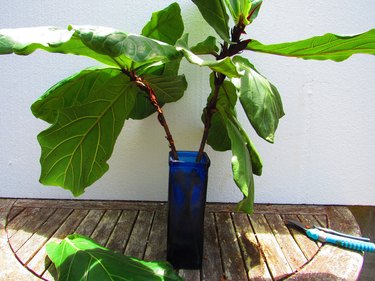
Types of Fiddle Leaf Figs
- Regular fiddlehead fig
(Ficus lyrata): The original and still the favorite, this is the lovely plant that started trending several years ago and still lands on the top of the popularity list. - Bambino (Ficus lyrata 'Bambino'): Anyone who longs for a fiddle leaf but has a small apartment might love this dwarf variety.
- Varigated (Ficus lyrata 'Variegata'): For those who want the elegance of a fiddle leaf but a bit more showy, this is the one for you. The leaves are an eye-catching blend of ivory and green.
- Lofty fig (Ficus altissima): This plant is tall with pointy leaves in a light lemon-lime variegation.
- Compact (Ficus lyrata 'Compacta'): This fig tree looks like the standard fiddle leaf but is shorter with smaller leaves.
